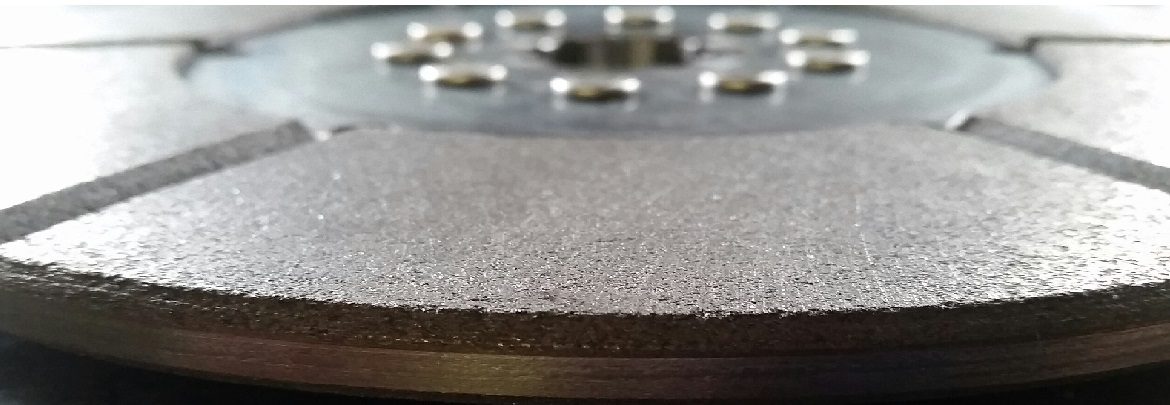Finding the right clutch for your drag car can be a challenge. There are so many options. You need to determine the proper size, number of discs, materials, and more. We have found that clutch materials is one of the most confusing topics for many stick shift racers. So we called up an expert on clutch materials, Cale Aronson of Black Magic Clutches. Here’s what he had to say.
There have been countless friction materials used in clutches over the years. The most common that you’ll hear about are Ceramic, Kevlar, Carbon Fiber, Organic, Dual-Friction, Cerametallic, and Sintered Iron. All of these have various pros and cons. Only a couple of them should be used for serious drag racing applications.
The biggest problem is many manufactures don’t necessarily understand the materials. They’re more worried about cost and “engagement noise” to choose a clutch material that actually performs well. They aren’t the ones out there tuning and dynoing clutches.
We then asked Cale to rank these clutch materials from worst to best for drag racing. He says that it’s not a perfect list, as sometimes a lower-ranked material can work better for certain applications. But in general, here are the worst to best clutch materials for drag racing:
7. Ceramic
Ceramic clutches use a chemical compound to give it a unique texture. These materials act like an on-off switch. And drag racing clutches MUST SLIP. For that reason, ceramic clutches should not be used for drag racing. Ceramic clutches do work in other applications like road racing and small-diameter IndyCar racing, where slipping the clutch isn’t desired.
It’s also worth noting that ceramic clutch materials are much different than the more common ceramic material that is used for dinner plates, ceramic bearings, and other porcelain-like products.
6. Kevlar
Kevlar is another clutch material that should not be used for drag racing. Kevlar is a long fibrous material that is designed to aggressively grip. It’s excellent in applications where you need an on-off switch, but it does not like to slip. And again, drag racing clutches MUST SLIP.
5. Carbon Fiber
Carbon fiber is very similar to Kevlar. A long fibrous material that doesn’t like to slip. There’s a reason that carbon brakes are popular. They have an incredible amount of grip and can lock up quickly. They are also known for increasing grip as they get hotter. Avoid clutches made out of carbon fiber for drag racing.
4. Organic
There is a lot of misinformation surrounding organic clutches. Organic clutches are also a fibrous material, so they’re not the best at slipping. Organic clutches have been aggressively marketed as the best clutch for street cars due to drivability. But these clutches should not be used for drag racing. An organic clutch can work for a little bit, but they wear extremely quickly when slipped. You’ll kill an organic clutch in no time with proper slip.
3. Dual-Friction
Dual-friction clutches just means that there are two different materials being used. The pressure plate side will use a different material than the flywheel side. The two materials used can vary, but the most common is organic on one side and carbon on the other. There are other popular styles that use carbon on one side and cerametallic on the other. These clutches are marketed as being, “The best of both worlds.” The organic side promotes drivability and reduces engagement chatter. The carbon side promotes a more aggressive grip.
While dual-friction clutches are a slightly better option than organic clutches, they still should not be used for drag racing. The organic side of the clutch will still wear out very quickly under proper slip. These clutches are designed for street cars that aren’t serious about their track times. A street car under 900 horsepower that just does burnouts and goes to the grocery store can get away with using a dual-friction clutch.
2. Cerametallic
Many people confuse cerametallic and ceramic. They’re completely different! Cerametallic is a copper-based powder metal compound. It has many properties that make it good for drag racing. It slips well and is the longest-lasting material. Cerametallic is more pliable with heat. It bonds harder. It gets grabbier when it gets hot. It’s also a common material for brake pads that need to last a bit longer.
Black Magic can mix many different material combinations to make it more or less aggressive to fit a combination. You can build a cerametallic blend to hold just as much as a 50/50 blend sintered iron disc. But it is still not as aggressive as the strongest sintered iron blends.
Black Magic commonly uses cerametallic for floater plates in higher-end clutches for its desirable properties. It’s also used for heat shield facing in truck and tractor pull stuff.
1. Sintered Iron
Simply put, sintered iron is the best clutch material for drag racing. It excels at handling heat during clutch slip while maintaining a consistent ramp. Like cerametallic, sintered iron is also a powder metal compound. You can also build multiple blends of sintered iron for the proper level of friction.
Sintered iron doesn’t last as long as cerametallic. However, it is slightly more consistent and it cools quicker between rounds. It can also simply handle more power than a cerametallic compound.
Sintered iron clutches do have a “chirp” during engagement, but that doesn’t bother serious drag racers. According to Cale:
“Once you decide you want to go fast, you’ll get over it. You’re not driving a Cadillac anymore.“
So there you have it, sintered iron and cerametallic are your best options for drag racing applications.
Special thanks to Cale Aronson for continuing to push the sport of stick shift drag racing. You can call Cale at Black Magic Clutches for a clutch that fits your needs.



